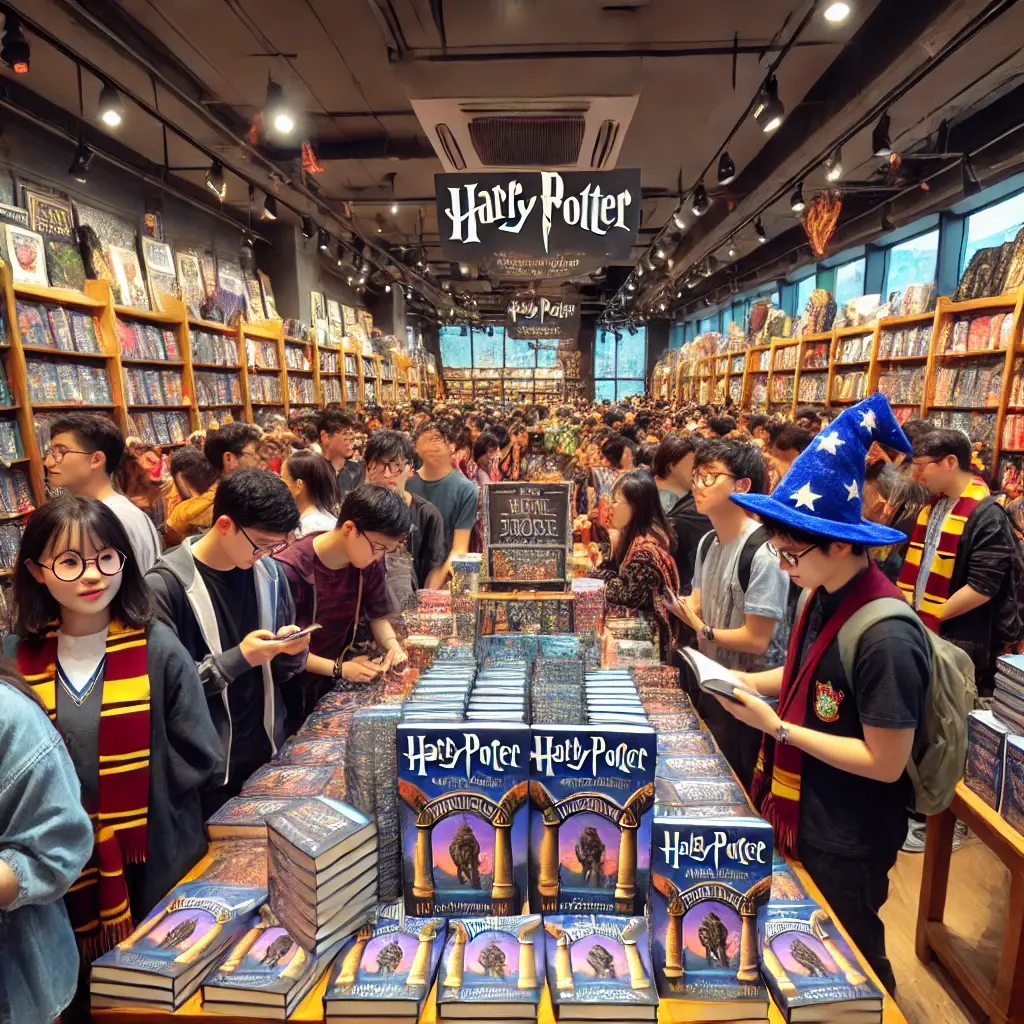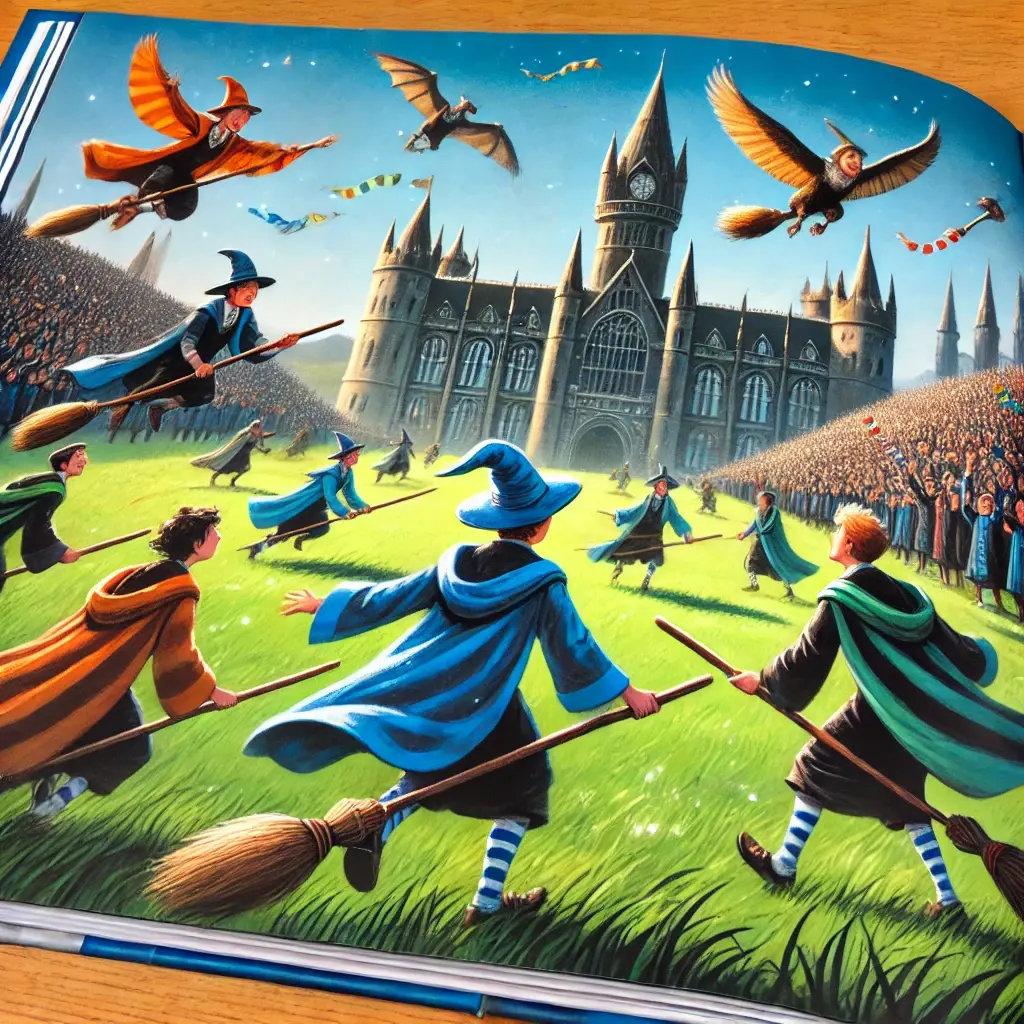The release of “Harry Potter and the Deathly Hallows,” the final book in J.K. Rowling’s Harry Potter series, on July 21, 2007, marked a monumental day in literary history. Fans around the world lined up for midnight releases, eager to discover the fates of Harry Potter and his friends in their ultimate battle against Voldemort. The series’ conclusion brought an end to a saga that had enchanted millions of readers worldwide, significantly impacting popular culture, reviving enthusiasm for young adult literature, and introducing a new generation to the joys of reading.

The anticipation for “Harry Potter and the Deathly Hallows” had been building for years, with each preceding book in the series increasing the fervor among fans. The first book, “Harry Potter and the Philosopher’s Stone” (released as “Harry Potter and the Sorcerer’s Stone” in the United States), debuted on June 26, 1997. It introduced readers to the young wizard Harry Potter, who discovers on his eleventh birthday that he is a wizard and is invited to attend Hogwarts School of Witchcraft and Wizardry.
J.K. Rowling’s creation of a magical world filled with enchanting creatures, spellbinding adventures, and deep, relatable characters quickly captured the imaginations of readers of all ages. The initial reception of the first book was modest, but it soon gained traction through word of mouth and positive reviews. By the time “Harry Potter and the Chamber of Secrets” was released in July 1998, the series had already begun to amass a significant following.
The third book, “Harry Potter and the Prisoner of Azkaban,” published in July 1999, further expanded the series’ popularity, earning critical acclaim for its darker tone and more complex plot. Each subsequent release, including “Harry Potter and the Goblet of Fire” in 2000 and “Harry Potter and the Order of the Phoenix” in 2003, saw growing excitement and midnight launch parties, solidifying Harry Potter as a cultural phenomenon.
The series’ blend of fantasy, adventure, and coming-of-age themes resonated deeply with readers. The characters’ struggles with identity, friendship, and morality mirrored the real-life challenges faced by young adults, making the books accessible and meaningful to a wide audience. Rowling’s ability to weave intricate plots with surprising twists kept readers eagerly awaiting the next installment.
By the time “Harry Potter and the Half-Blood Prince” was released in July 2005, the series had become a global sensation. The sixth book ended with a shocking cliffhanger, setting the stage for the climactic events of “Harry Potter and the Deathly Hallows.” Speculation about the final book’s plot was rampant, with fans theorizing about the fates of their favorite characters and the resolution of long-standing mysteries.
The midnight release of “Harry Potter and the Deathly Hallows” was an unprecedented event in literary history. Bookstores around the world hosted launch parties, complete with themed decorations, costume contests, and games. Fans camped out for hours, eager to be among the first to get their hands on the book. The excitement was palpable, as readers of all ages came together to celebrate the conclusion of a beloved series.
The final book did not disappoint. It brought closure to the epic saga, with Harry, Hermione, and Ron embarking on a perilous quest to find and destroy Voldemort’s Horcruxes. The story was filled with action, suspense, and emotional moments, culminating in the Battle of Hogwarts. The resolution of key plotlines and the ultimate defeat of Voldemort provided a satisfying conclusion for fans who had followed the characters’ journeys for a decade.
The impact of the Harry Potter series extends far beyond its literary achievements. The books have been translated into over 80 languages, making them accessible to a global audience. They have inspired a massive multimedia franchise, including successful film adaptations, merchandise, theme park attractions, and a stage play. The series has also given rise to a vibrant fan community, with fan fiction, artwork, and conventions celebrating the wizarding world.
One of the most significant contributions of the Harry Potter series is its effect on young adult literature. The books’ success demonstrated that stories aimed at younger readers could achieve mainstream popularity and critical acclaim. This helped pave the way for other best-selling series such as “The Hunger Games” by Suzanne Collins and “Twilight” by Stephenie Meyer, which have similarly captivated audiences and influenced popular culture.
The series also had a profound impact on reading habits. Many children who grew up with Harry Potter developed a lifelong love of reading, thanks to Rowling’s engaging storytelling. The books encouraged literacy and sparked an interest in exploring other literary works, both within and outside the fantasy genre. Educators and parents have praised the series for its ability to inspire reluctant readers to pick up a book and discover the joy of reading.
J.K. Rowling herself has become a literary icon, with her rags-to-riches story serving as an inspiration to aspiring writers. Her journey from struggling single mother to one of the world’s best-selling authors is a testament to the power of perseverance and creativity. Rowling’s charitable work, including her support for children’s and literacy organizations, further cements her legacy as a positive influence on society.
The themes explored in the Harry Potter series, such as the importance of friendship, courage, and standing up against injustice, continue to resonate with readers. The books address complex issues, including prejudice, the abuse of power, and the consequences of war, in a way that is accessible to young readers. This has sparked important conversations and encouraged readers to think critically about the world around them.

The Harry Potter series has left an indelible mark on popular culture. References to the books and films are ubiquitous, and terms like “Muggle,” “Quidditch,” and “Hogwarts” have entered the common lexicon. The series has inspired countless parodies, adaptations, and homages, highlighting its enduring influence on media and entertainment.
As we celebrate the legacy of “Harry Potter and the Deathly Hallows,” it is clear that the series’ impact will be felt for generations to come. The wizarding world created by J.K. Rowling continues to enchant new readers, while long-time fans revisit the books and share them with their children. The series’ themes of love, loyalty, and bravery remain timeless, ensuring that Harry Potter will always hold a special place in the hearts of readers worldwide.
